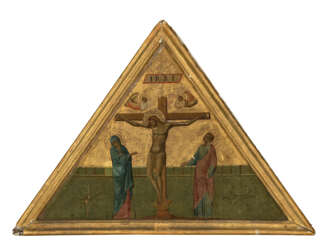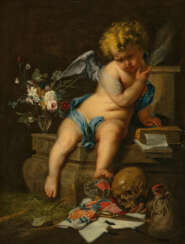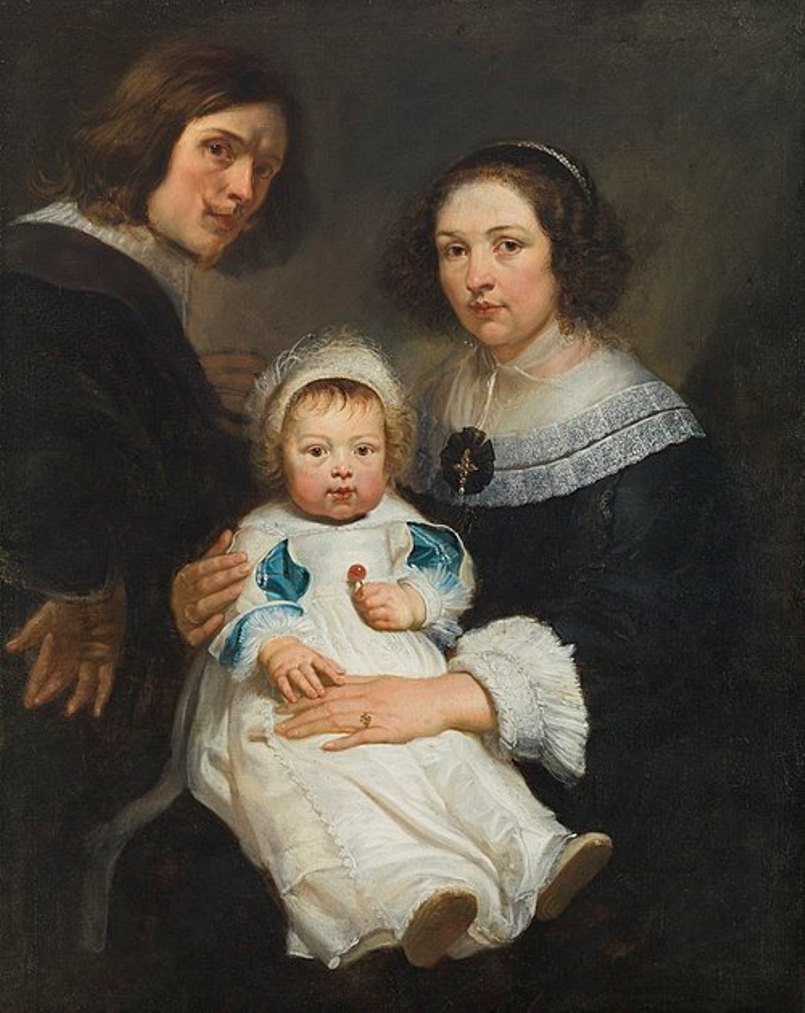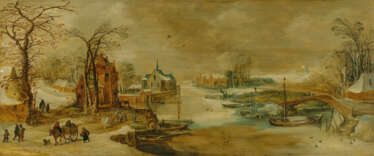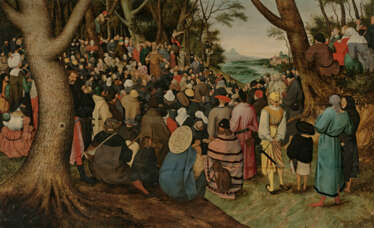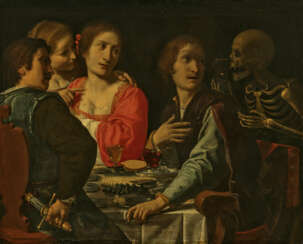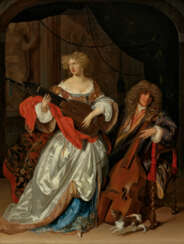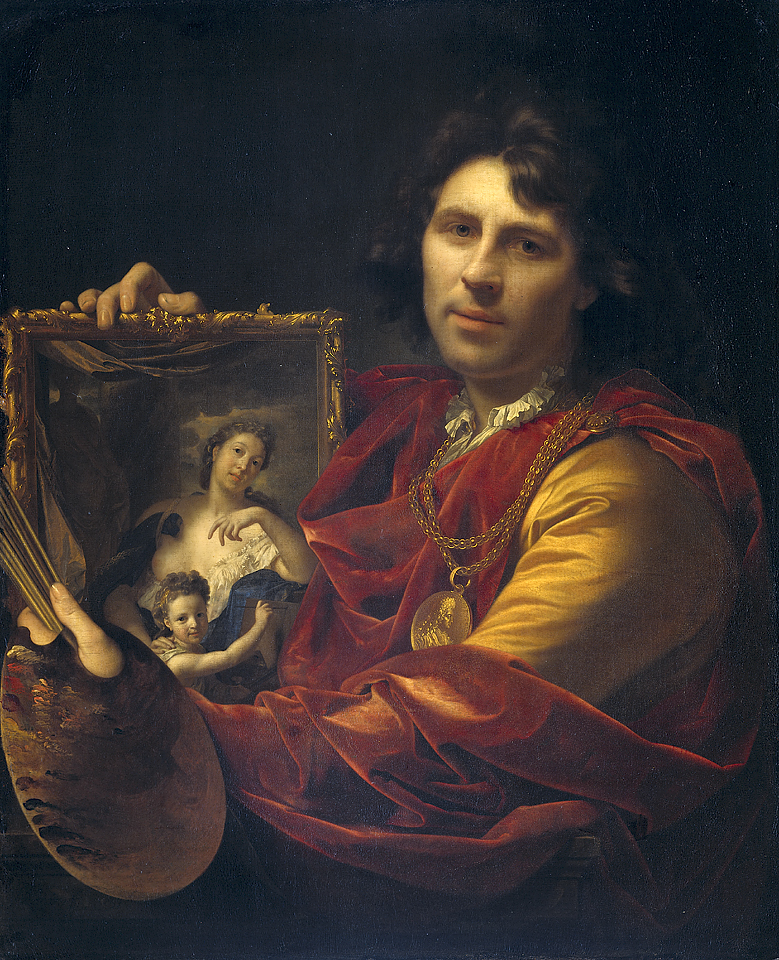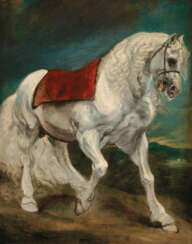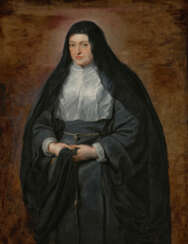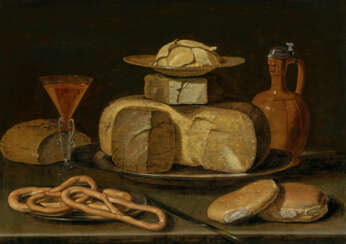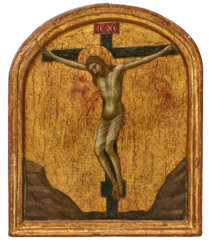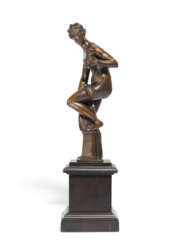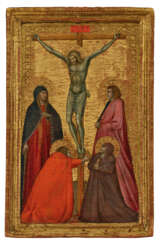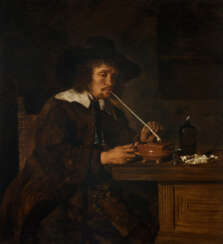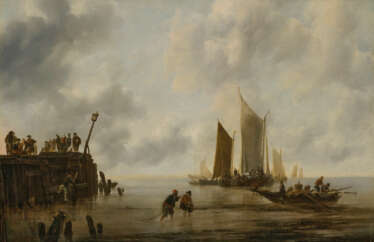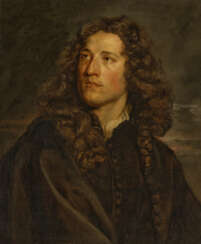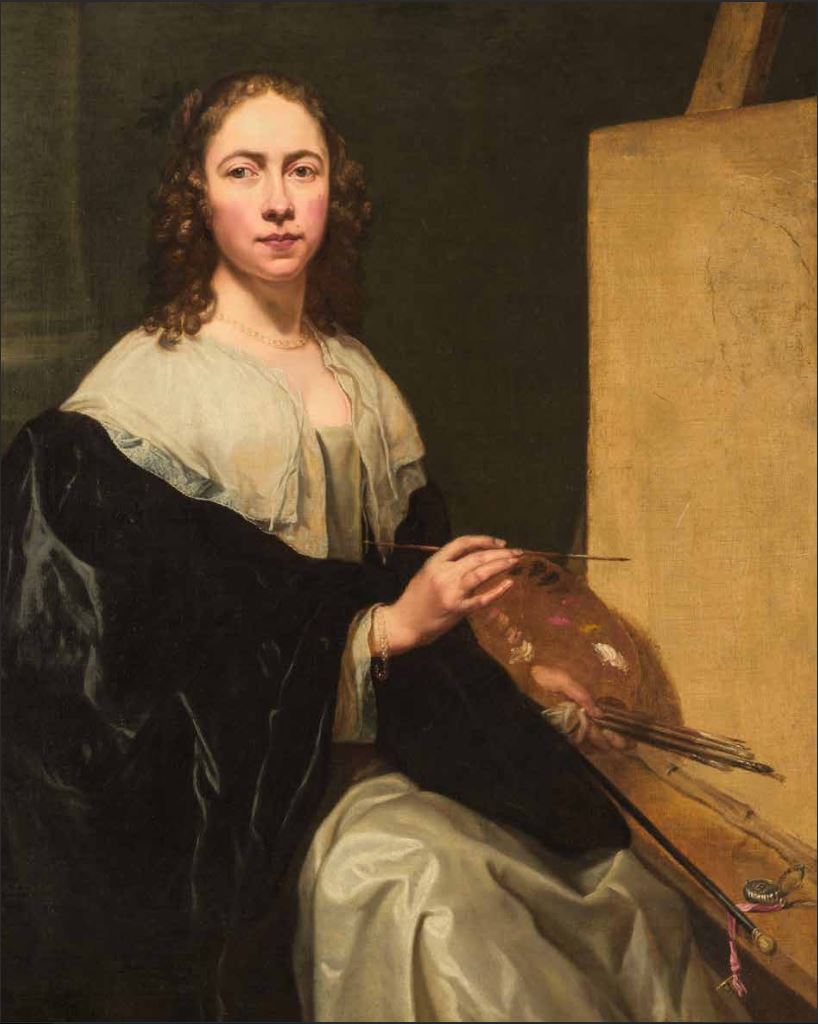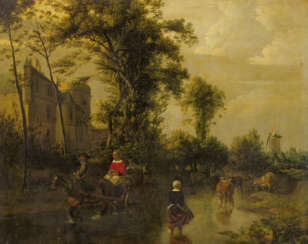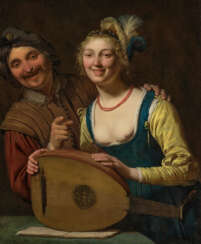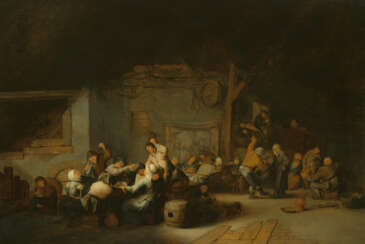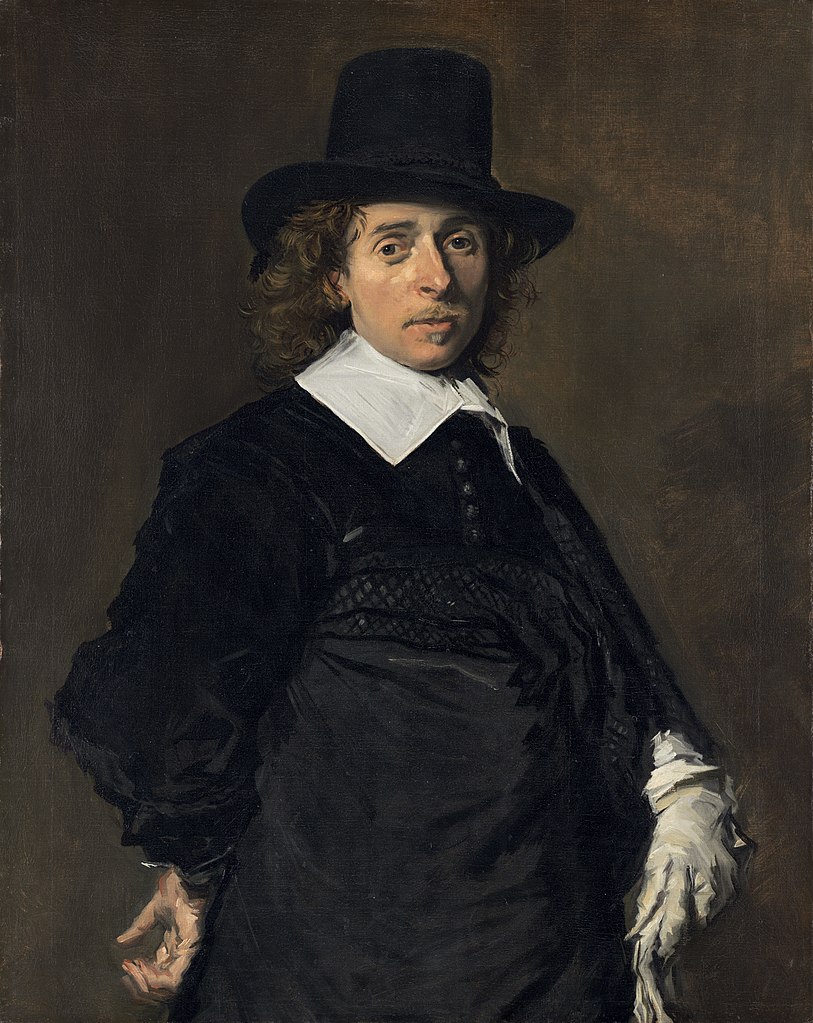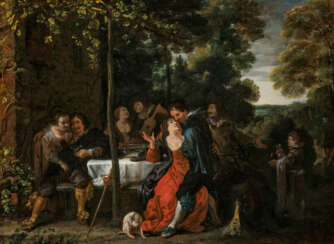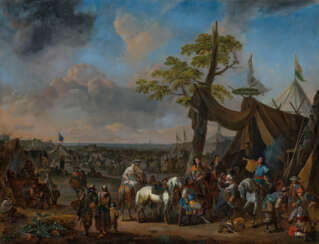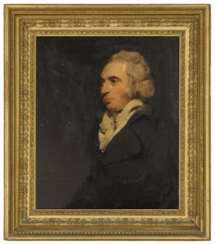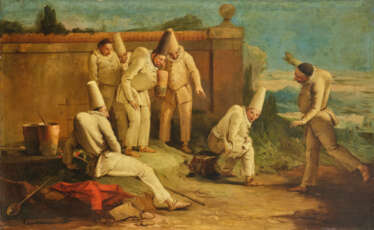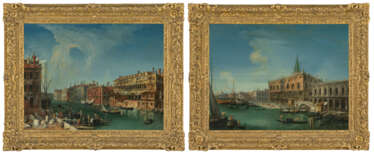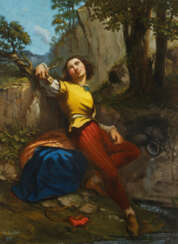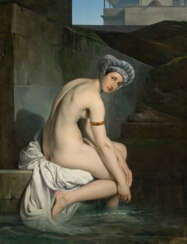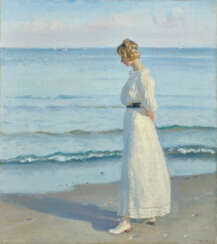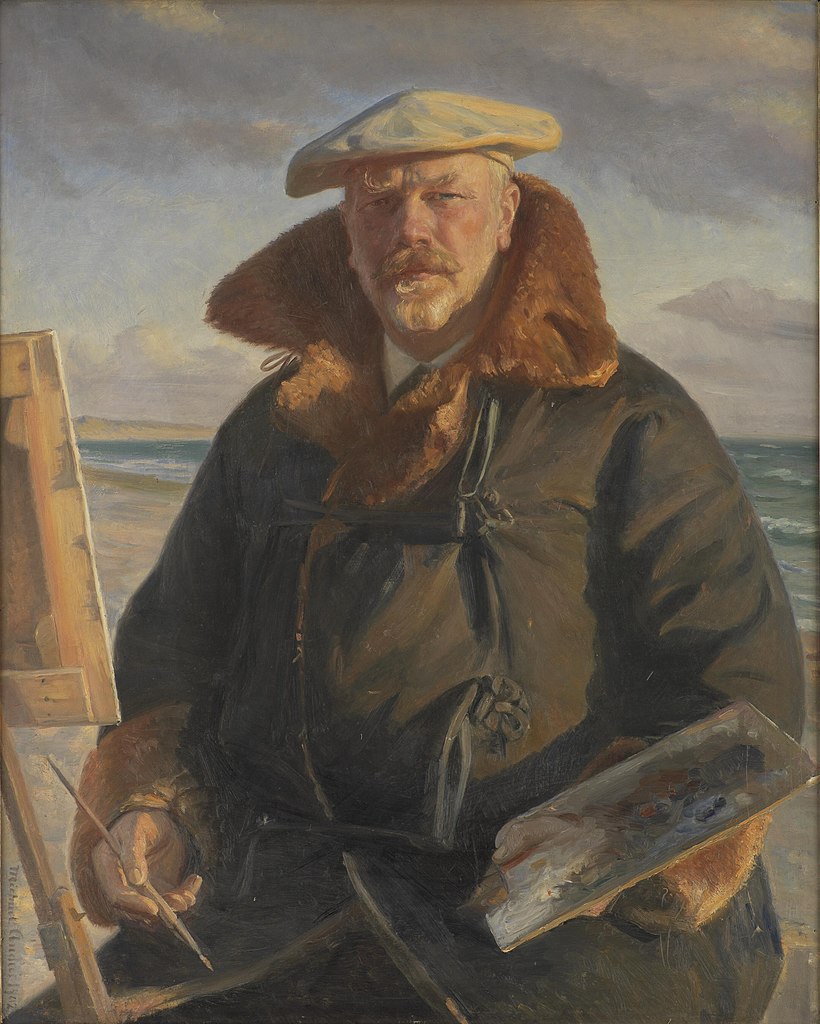
Old Masters Part I
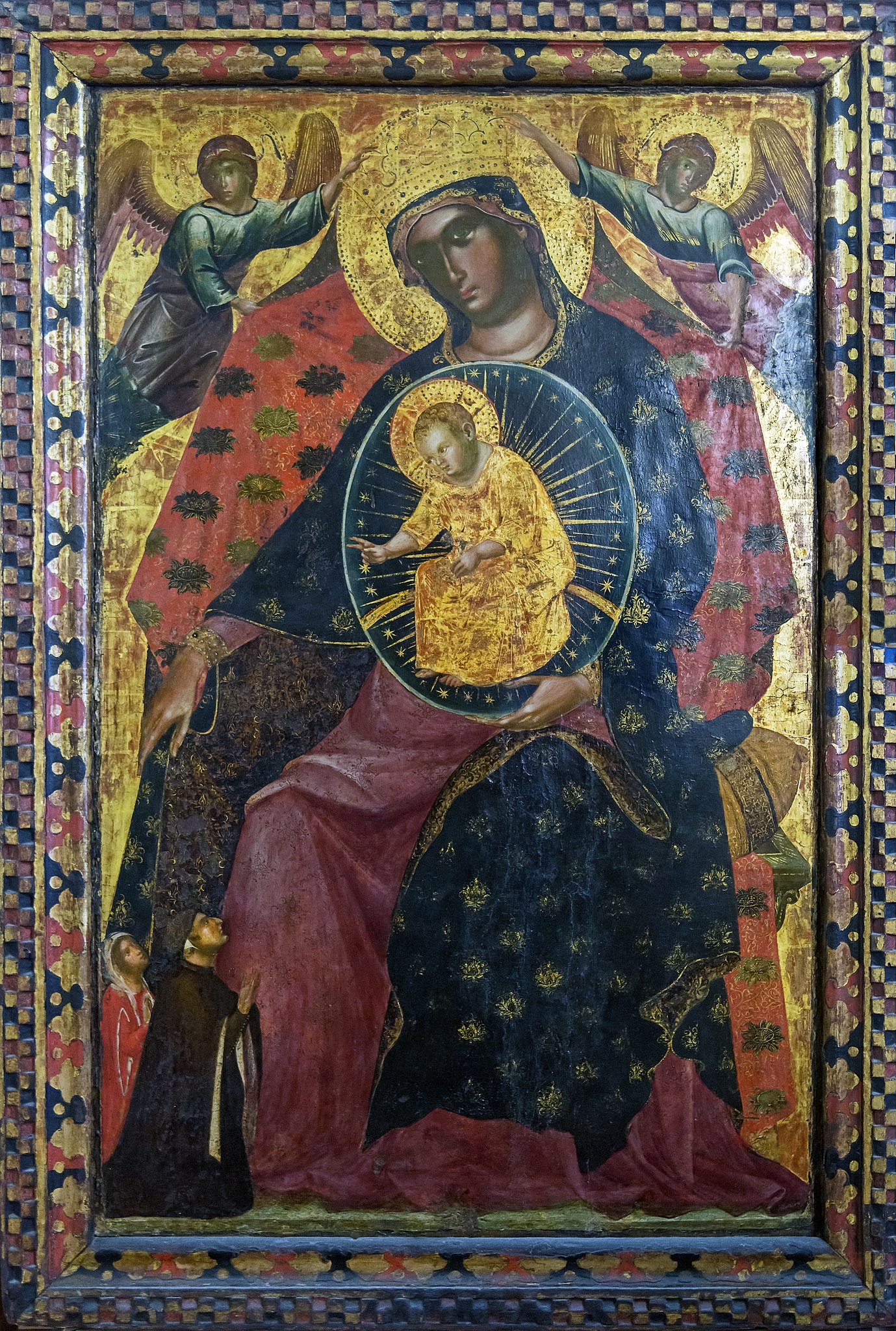
Paolo Veneziano was a 14th-century painter from Venice, the "founder of the Venetian School" of painting, probably active between about 1321 and 1362.
He led the development in Venice of the elaborately-framed polyptych or "composite altarpiece" form, which became popular all over Italy during the 13th century, partly in response to liturgical changes (only reversed in the 20th century) which placed the priest celebrating mass on the same side of the altar as the congregation, so with his back to them for much of the time. This encouraged the creation of altarpieces behind and above the altar, as a visual devotional focus. He is the oldest Venetian painter whose name is known, and the earliest to paint the new subject of the Coronation of the Virgin.
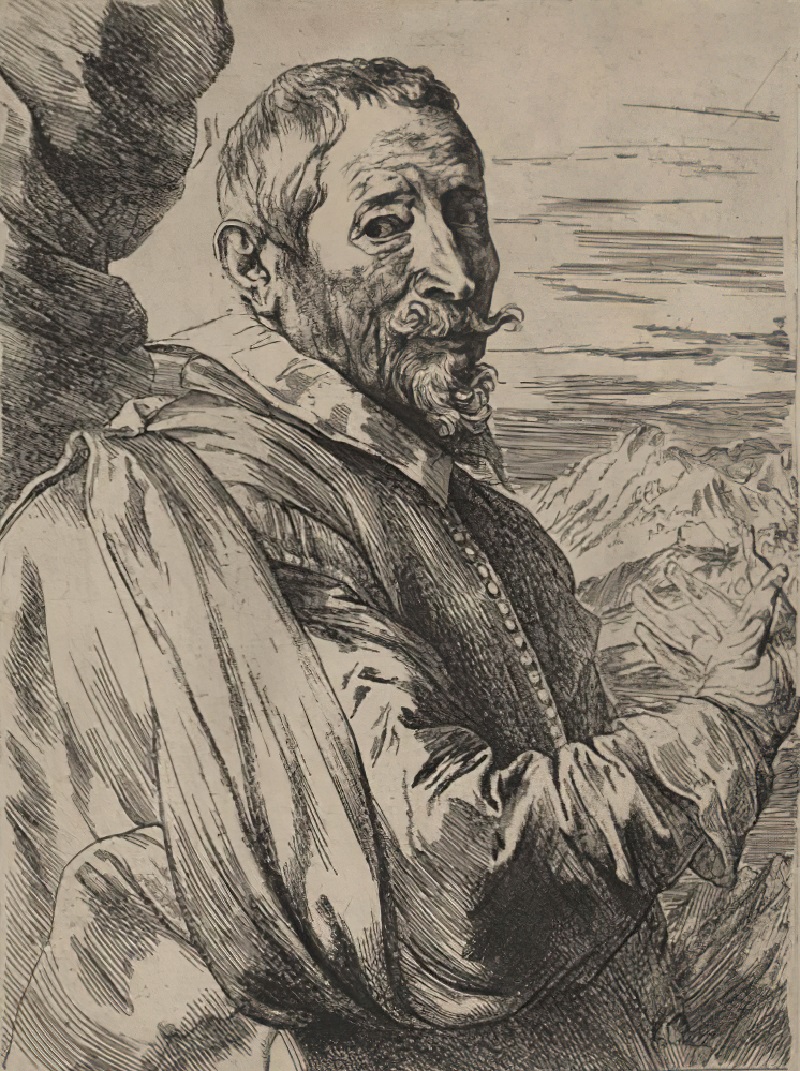
Joos de Momper the Younger was a Flemish landscape painter active in Antwerp between the late 16th century and the early 17th century. Brueghel's influence is clearly evident in many of de Momper's paintings. His work is situated at the transition from late 16th-century Mannerism to the greater realism in landscape painting that developed in the early 17th century. He achieved considerable success during his lifetime.
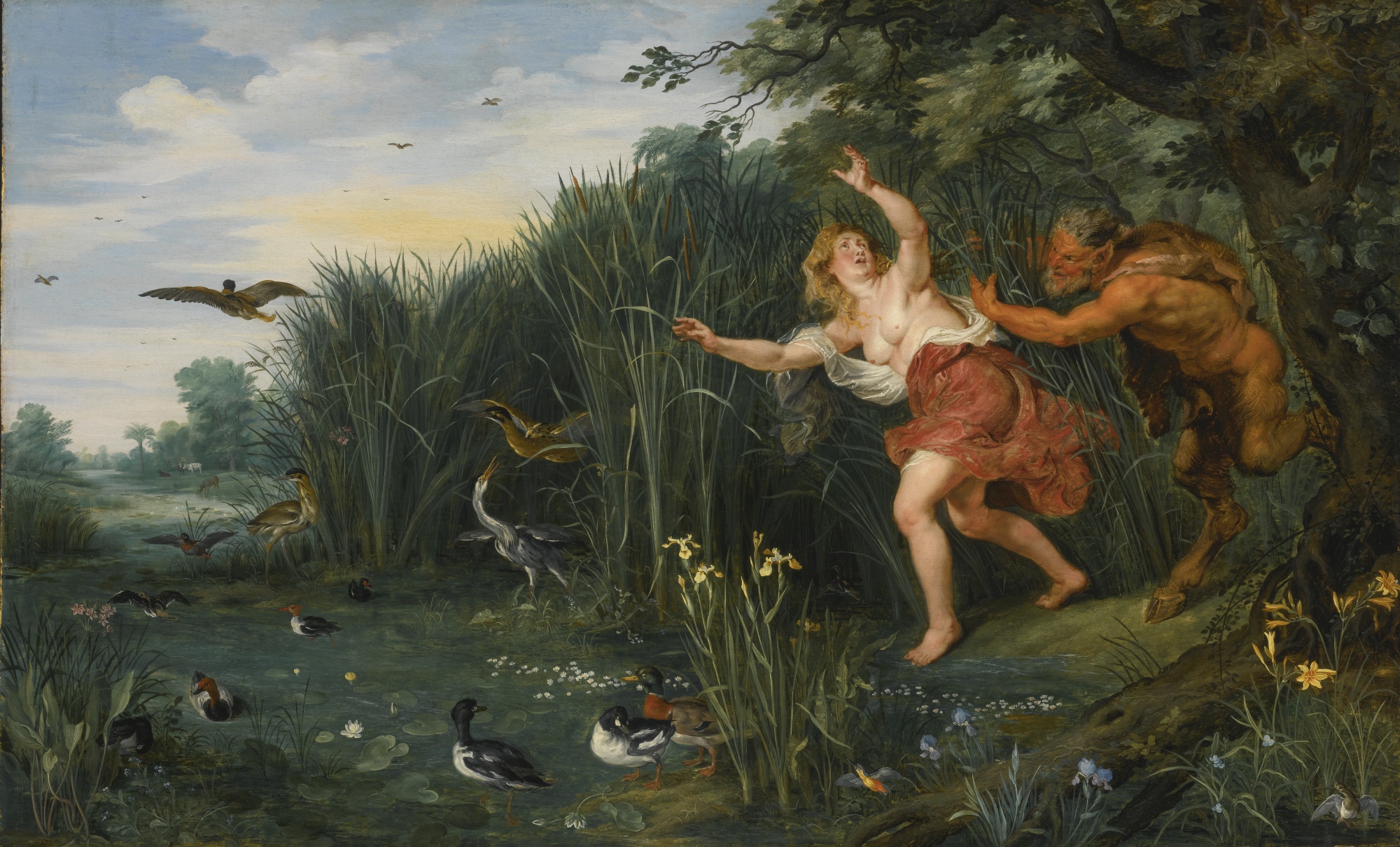
Jan Bruegel the Younger was a Flemish Baroque painter. He was the son of Jan Brueghel the Elder, and grandson of Pieter Bruegel the Elder, both prominent painters who contributed respectively to the development of Renaissance and Baroque painting in the Habsburg Netherlands. Taking over his father's workshop at an early age, he painted the same subjects as his father in a style which was similar to that of his father. He regularly collaborated with leading Flemish painters of his time.
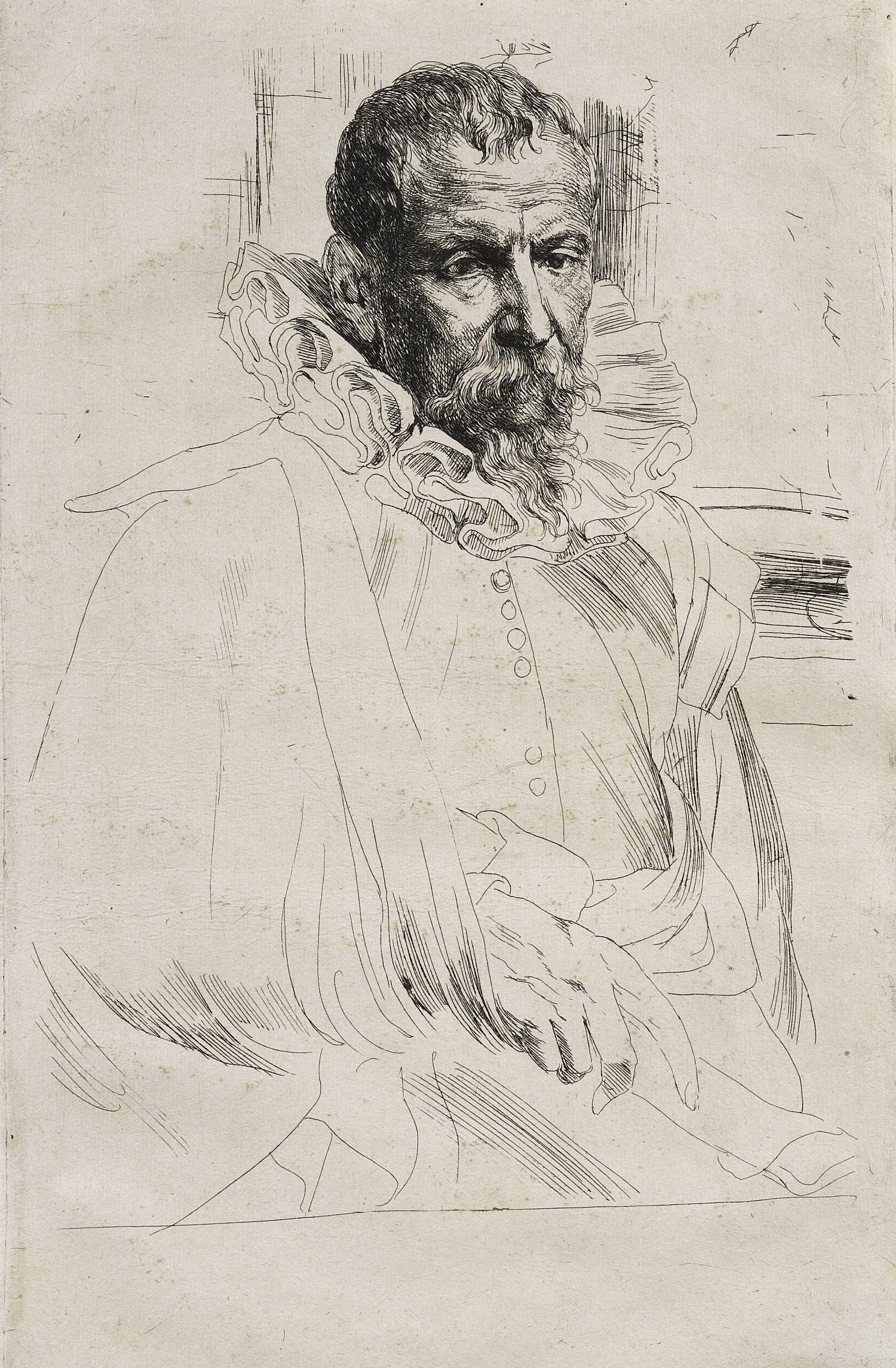
Pieter Brueghel the Younger was a Flemish artist celebrated for his detailed landscapes, religious themes, proverbs, and vibrant village scenes. Despite being the son of the illustrious Pieter Bruegel the Elder, Brueghel the Younger carved out his own niche in the art world, earning the moniker 'Hell Brueghel' for his dynamic scenes of fires and energetic copies of his father's peasant life portrayals.
Brueghel the Younger's original creations, such as "The Village Lawyer," showcase his keen observation of village life, merging the energy and boldness of 17th-century style with his father's idiom. His work is characterized by its lively, picturesque depiction of peasants, albeit some critics argue they lack the subtlety and humanism of his father's creations. Despite this, Brueghel the Younger's legacy includes a significant number of original works and copies that were rediscovered in the 20th century, highlighting his contribution to the Flemish painting tradition.
His workshop was known for its prolific output, especially in producing copies of Bruegel the Elder's compositions, a testament to the enduring popularity and influence of the Bruegel family's artistic legacy. However, Brueghel the Younger also impressed with his unique compositions, contributing to the genre of still life and village scenes with a distinct style that resonated well into modern times.
For collectors and experts in art and antiques, Pieter Brueghel the Younger's works represent an important period in Flemish art, offering insights into the evolution of genre painting and the detailed portrayal of rural life. His paintings, held in esteemed collections worldwide, continue to be studied and admired for their vibrancy, narrative quality, and historical value.
To explore more about Pieter Brueghel the Younger and to stay updated on sales and auction events related to his work, signing up for specialized updates can offer exclusive insights into the world of this influential Flemish painter. This subscription ensures enthusiasts and collectors are well-informed about developments related to Brueghel the Younger's oeuvre, enhancing their appreciation and understanding of his artistic legacy.
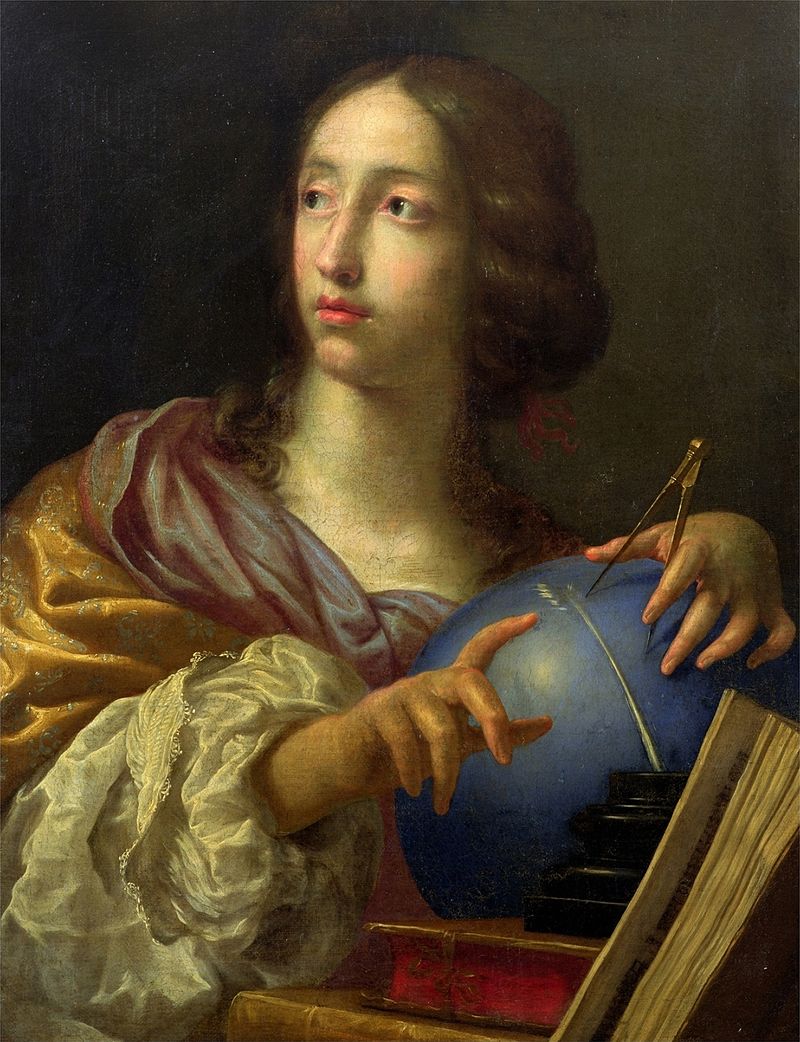
Giovanni Martinelli, a distinguished Italian painter from the Baroque era, was celebrated for his profound contributions to the Florentine art scene. His mastery in art was predominantly showcased in Florence, where he created a legacy through his exceptional allegorical works and religious paintings.
Martinelli's artistry was profoundly influenced by the Caravaggesque style, evident in the exceptional clarity of the protagonists' faces and the use of extraordinarily clear, cold colour tones in his paintings. His enrollment in the Accademia del Disegno in Florence in 1636 marked a significant phase in his career, leading him to explore more complex allegories and adopt darker colour tones, influenced by the works of Francesco Furini and Cesare Dandini.
His allegorical works, known for their captious symbolism, rare elegance, and refined formal nobility, stand in perfect harmony with the philosophical and moral debates of his time. These works, alongside his religious subjects and biblical stories, are charged with strong moral connotations and demonstrate Martinelli's keen interest in nature and meticulous rendering of objects.
Among his notable works are the "Feast of Balthasar" and the "Ecce Homo" housed in the Uffizi, and the "Judgement of Solomon" in the National Art Gallery in Karlsruhe, which highlight his ability to infuse his subjects with deep moral and philosophical undertones. His work, "Allegory of Painting," located in the Uffizi, is particularly celebrated for its depiction of the art of painting through the figure of a young woman, showcasing Martinelli's focus on warm light and the sensuality of female beauty.
For collectors and experts in art and antiques, Giovanni Martinelli's oeuvre offers a window into the Baroque period's complex allegories and profound religious narratives. His contributions to the Florentine art scene of the 17th century reflect a rich blend of tradition and innovation, deserving of recognition and appreciation.
To stay updated on new discoveries and auction events related to Giovanni Martinelli, consider signing up for updates. This subscription ensures that you remain informed about the latest sales and events pertaining to this influential artist's work, offering unique opportunities for collectors and enthusiasts alike.
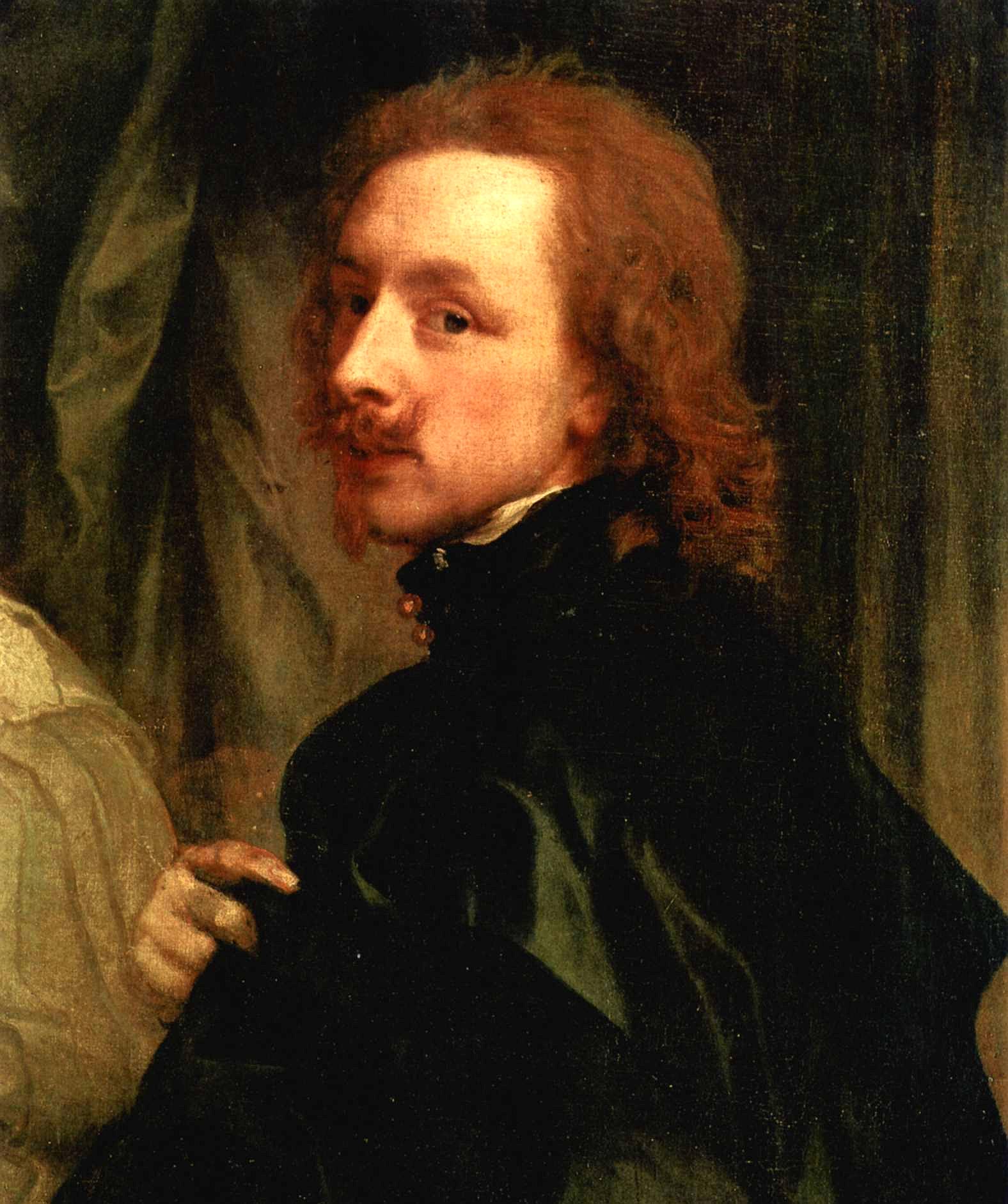
Anthony van Dyck, a Flemish painter born in 1599 in Antwerp and passed away in 1641 in London, is celebrated as one of the foremost Baroque painters of the 17th century. His notable contributions to the art world include his exceptional portraits of European aristocracy, as well as his religious and mythological paintings. Van Dyck's early exposure to art was influenced significantly by his apprenticeship with Hendrik van Balen and later, by the profound impact of working alongside Peter Paul Rubens. His mastery was recognized early on, leading him to set up his own workshop by the age of 15.
Van Dyck's journey to Italy in 1621 marked a pivotal phase in his career, allowing him to immerse himself in studying the Italian masters and commencing his successful stint as a portraitist. His style evolved under the influence of Titian, evident from his vibrant use of color and refined modeling of form. Van Dyck's Italian period not only honed his artistic skills but also established his reputation as a painter of consequence.
Upon returning to Antwerp, van Dyck's portraits became highly sought after, leading to commissions from notable figures such as Archduchess Isabella and Queen Mother Maria de' Medici. His role as a court painter further solidified in England under the patronage of King Charles I, where he was knighted and appointed as the principal painter, profoundly shaping the aristocratic character of Charles I's reign through his portraits.
Van Dyck's legacy extends beyond his death, having influenced English portrait painting for over a century. His innovative techniques in watercolour and etching, along with his sophisticated portrayal of subjects, continue to be admired. His art not only showcases his technical prowess but also reflects the cultural and social nuances of his era, making his work a significant study for collectors and art historians alike.
For enthusiasts eager to explore the intersections of art, history, and culture through the lens of Anthony van Dyck's work, staying informed about new discoveries and auction events is essential. Signing up for updates can provide exclusive insights into the world of one of the most influential figures in Flemish art. This subscription ensures that collectors and experts are well-informed of any developments related to van Dyck's oeuvre, enhancing their understanding and appreciation of his contributions to the art world.
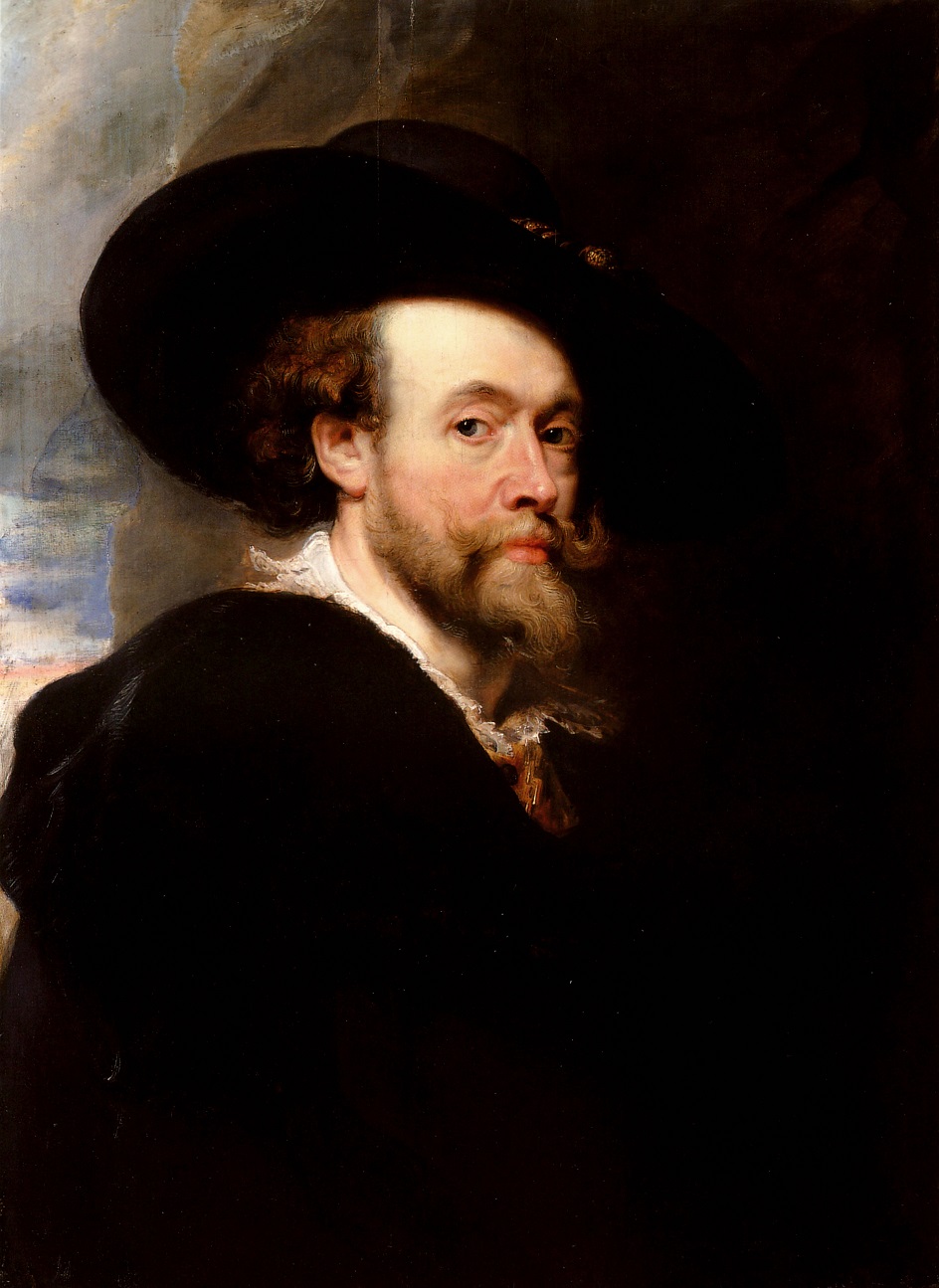
Peter Paul Rubens was a distinguished Flemish Baroque painter, renowned for his dynamic, vibrant, and sensuous paintings. Born on June 28, 1577, in Siegen, Westphalia, Germany, Rubens' family moved back to Antwerp in the Spanish Netherlands (now Belgium) after his father's death. He was raised in his mother’s Roman Catholic faith and received a classical education. He began his artistic training in 1591 and later traveled to Italy, where he was profoundly influenced by Renaissance masters like Titian, Tintoretto, and Veronese. This experience significantly shaped his artistic style.
Rubens' art is celebrated for its emphasis on movement, color, and sensuality. He was particularly skilled in depicting religious and mythological scenes, portraits, and landscapes. Some of his notable works include "The Descent from the Cross" and "The Raising of the Cross," which are prime examples of Baroque religious art, showcasing his unique style that blended influences from Italian Renaissance and his own innovations.
Rubens was not just a painter but also a diplomat, serving at various European courts. He was knighted by both Philip IV of Spain and Charles I of England. His diplomatic missions often intertwined with his artistic endeavors, as seen during his travels to Spain and Italy. In addition to painting, he was involved in designing tapestries, prints, and book title-pages. He ran a large workshop in Antwerp, producing works that were popular with nobility and art collectors across Europe. His studio was in his home, the Rubenshuis, now a museum.
His influence extended to his students, notably Anthony van Dyck, and his collaborative works with other artists like Jan Brueghel the Elder. Rubens' work continued to be celebrated for its vitality and influence on the Baroque style, making him one of the most influential artists of his time.
For those interested in the work and life of Peter Paul Rubens, many of his works can be found in museums and galleries worldwide, including the National Gallery in London, which houses several of his paintings like "A View of Het Steen in the Early Morning" and "Minerva protects Pax from Mars ('Peace and War')".
To stay updated on new product sales, auction events, and more related to Peter Paul Rubens, sign up for our updates. We provide essential information tailored for collectors and experts in art and antiques, focusing on the magnificent work of Rubens and his enduring legacy in the world of art.
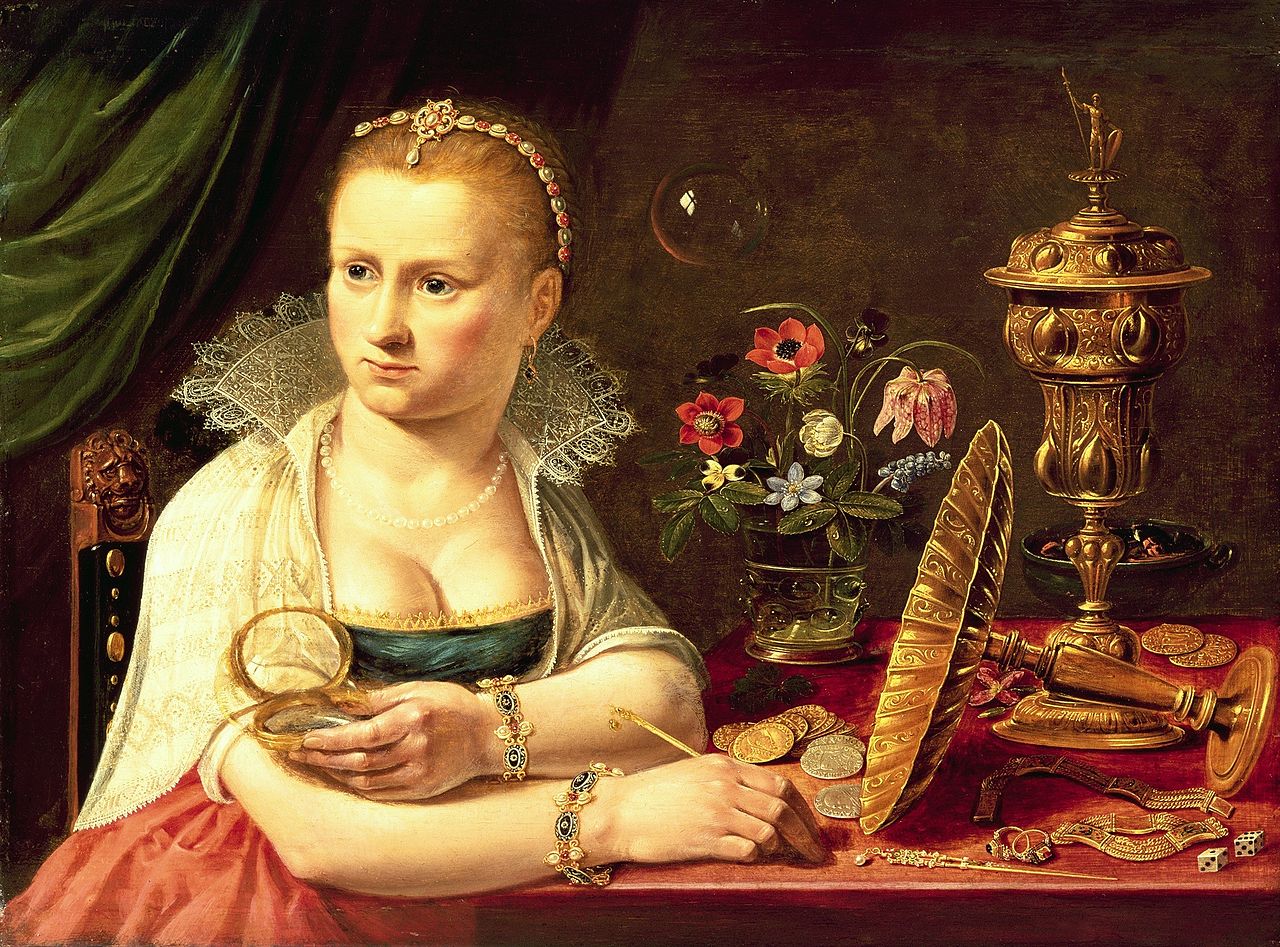
Clara Peeters was a Flemish still-life painter from Antwerp who worked in both the Spanish Netherlands and Dutch Republic.
Peeters is the best-known female Flemish artist of this era and one of the few women artists working professionally in seventeenth-century Europe, despite restrictions on women's access to artistic training and membership in guilds. Peeters specialized in still-life paintings with food and was prominent among the artists who shaped the traditions of the Netherlandish ontbijtjes, "breakfast pieces," scenes of food and simple vessels, and banketjes, "banquet pieces" with expensive cups and vessels in precious metals.
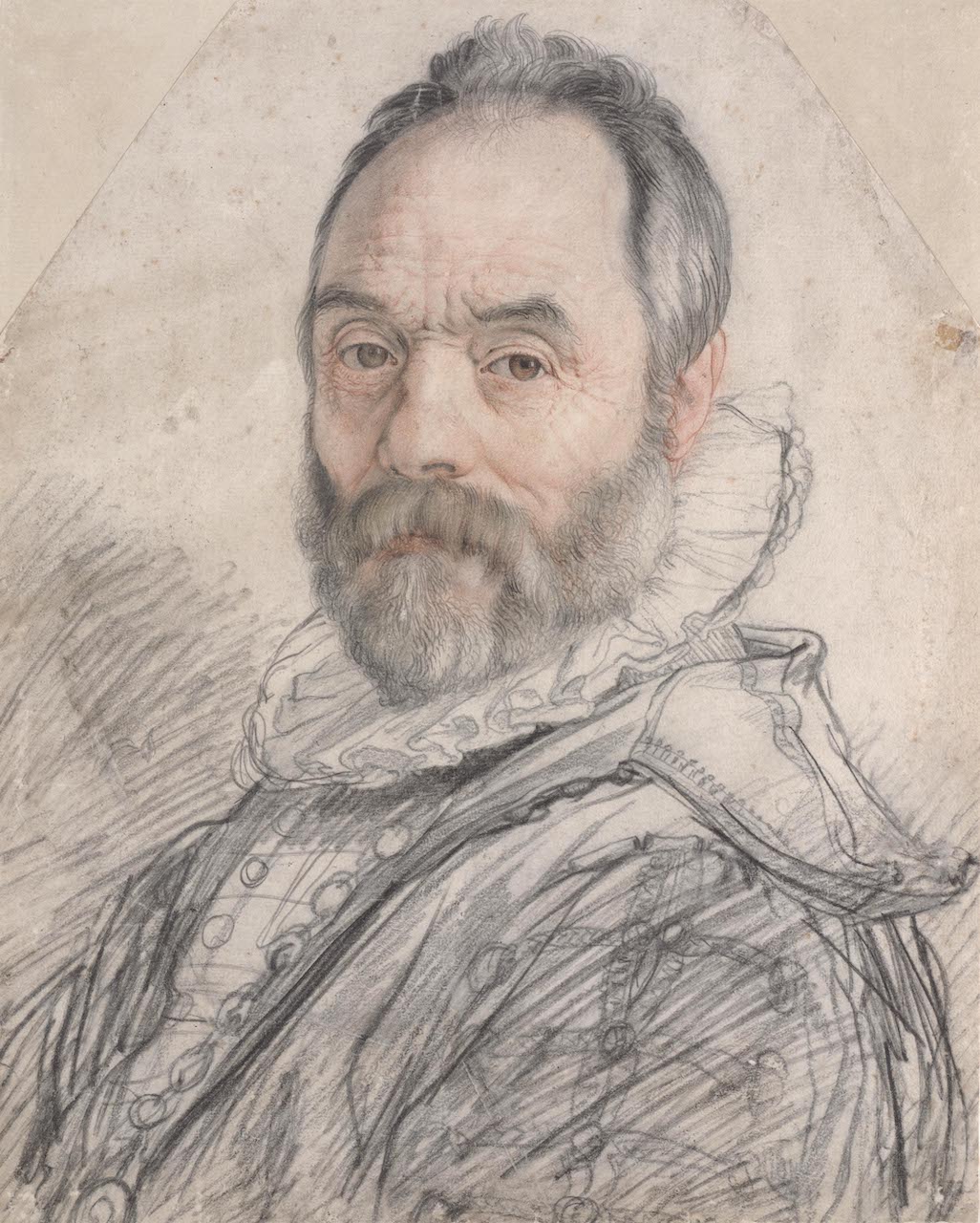
Giovanni da Bologna, also known as Jean de Boulogne (French), Giambologna (Italian), Fiammingo (Italian) and Jehan Boulongne (Flemish), was the last significant Italian Renaissance sculptor, with a large workshop producing large and small works in bronze and marble in a late Mannerist style.
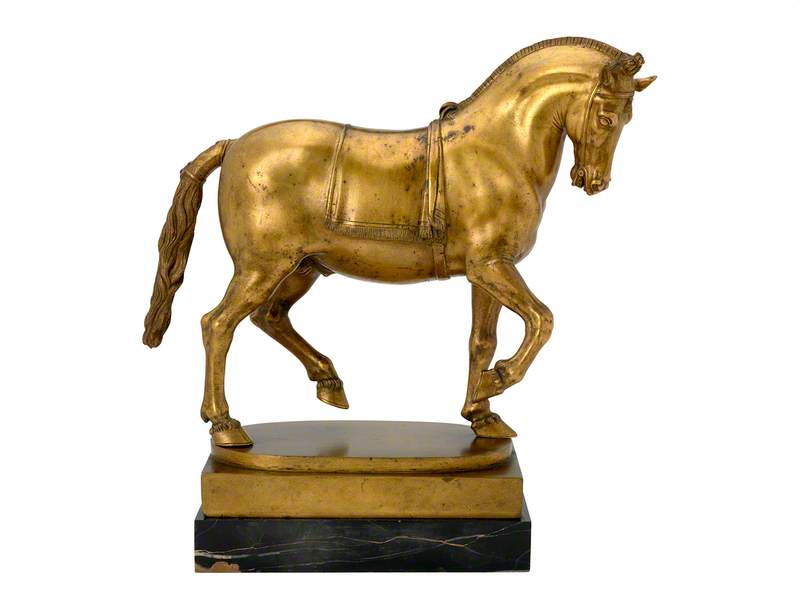
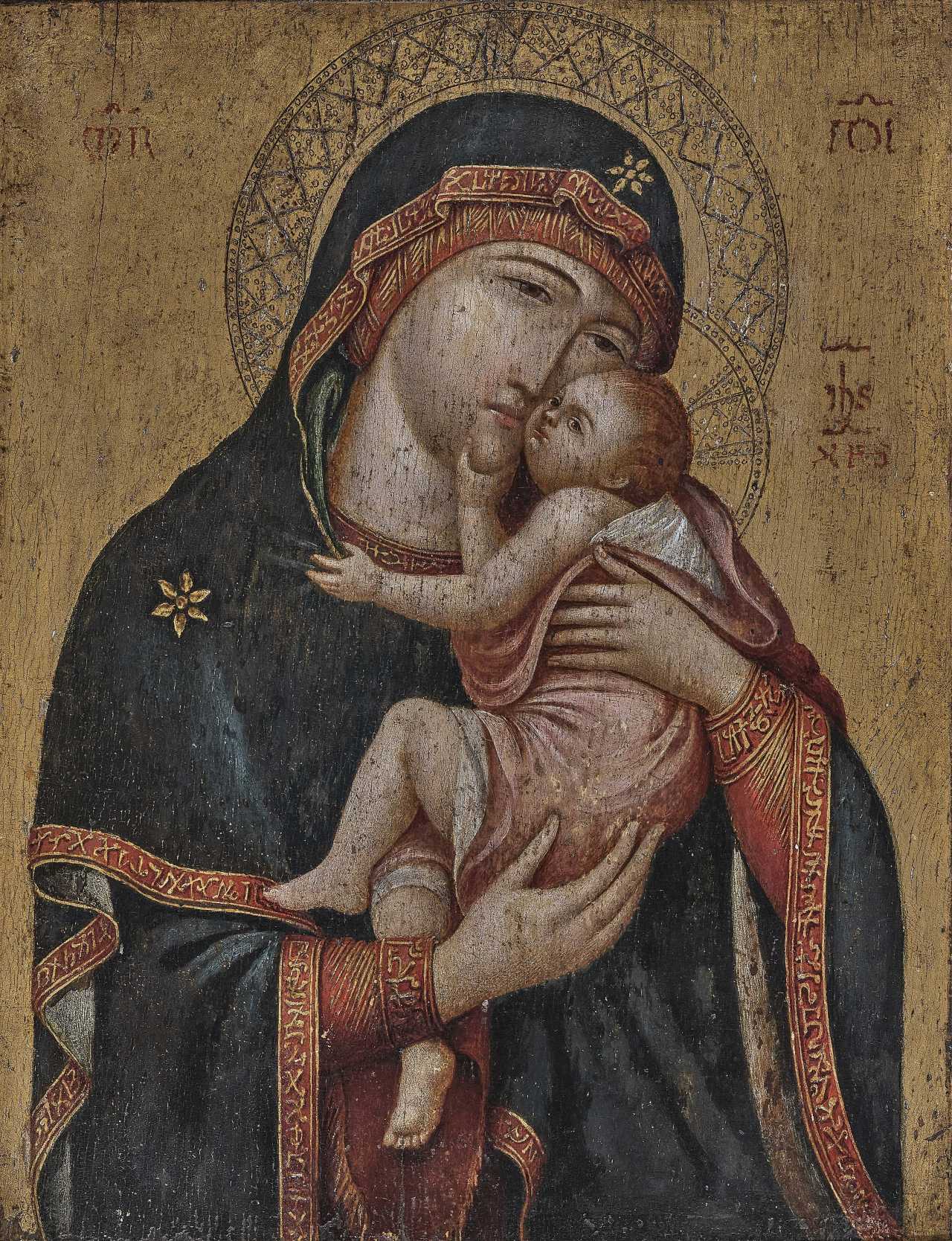
Pietro Lorenzetti was an Italian painter whose innovative contributions to the Sienese school of art marked a significant departure from the Byzantine style of the medieval period. Born in Siena, Lorenzetti was known for his detailed and expressive approach to painting, which helped lay the groundwork for the Italian Renaissance.
Renowned for his mastery in depicting light, shadow, and space, Lorenzetti introduced a sense of depth and realism previously unseen in Italian art. His works are characterized by a rich color palette and a keen observation of the human condition, rendering scenes with emotional depth and a tangible sense of atmosphere.
Among his most celebrated works is the "Birth of the Virgin" fresco in the Siena Cathedral, a masterpiece that showcases his ability to weave narrative and decoration into a cohesive whole. Lorenzetti's religious paintings, which are housed in various museums and churches, remain pivotal in understanding the evolution of European art during the 14th century.
For collectors and experts in art and antiques, Pietro Lorenzetti represents a fascinating study in the transition from medieval to Renaissance art. His contributions not only enriched the Italian artistic heritage but also influenced generations of artists to come.
To explore the legacy of Pietro Lorenzetti and stay informed about the latest research, exhibitions, and auction events featuring his work, signing up for updates is essential. This subscription will ensure that aficionados and collectors alike are always connected to the vibrant world of Sienese painting, offering exclusive insights and opportunities to appreciate the art of this pioneering master.
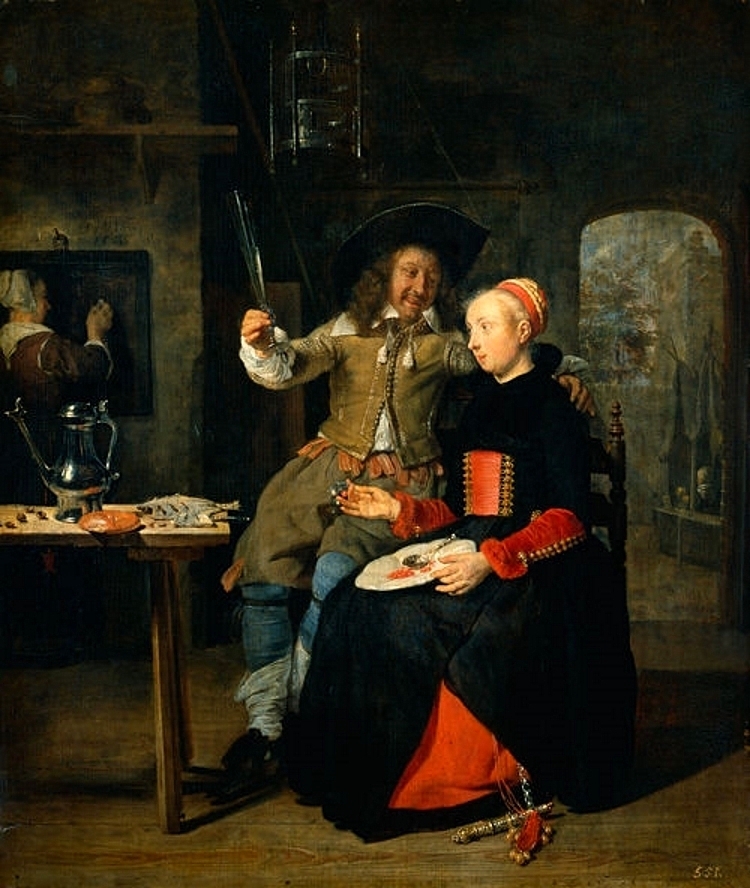
Gabriel Metsu was a Netherlandish painter of the Golden Age of Dutch painting, who painted mainly scenes of everyday life.
Metsu became one of the first members of the St. Luke's Artists' Guild in Leiden in 1648. He painted markets and outdoor interiors or genre scenes. He also produced many paintings of young women engaged in domestic tasks, often using his wife as a model, as in his painting St. Cecilia (1663).
In addition to genre, Gabriel Metsu was also engaged in portrait and historical painting, painted still lifes.
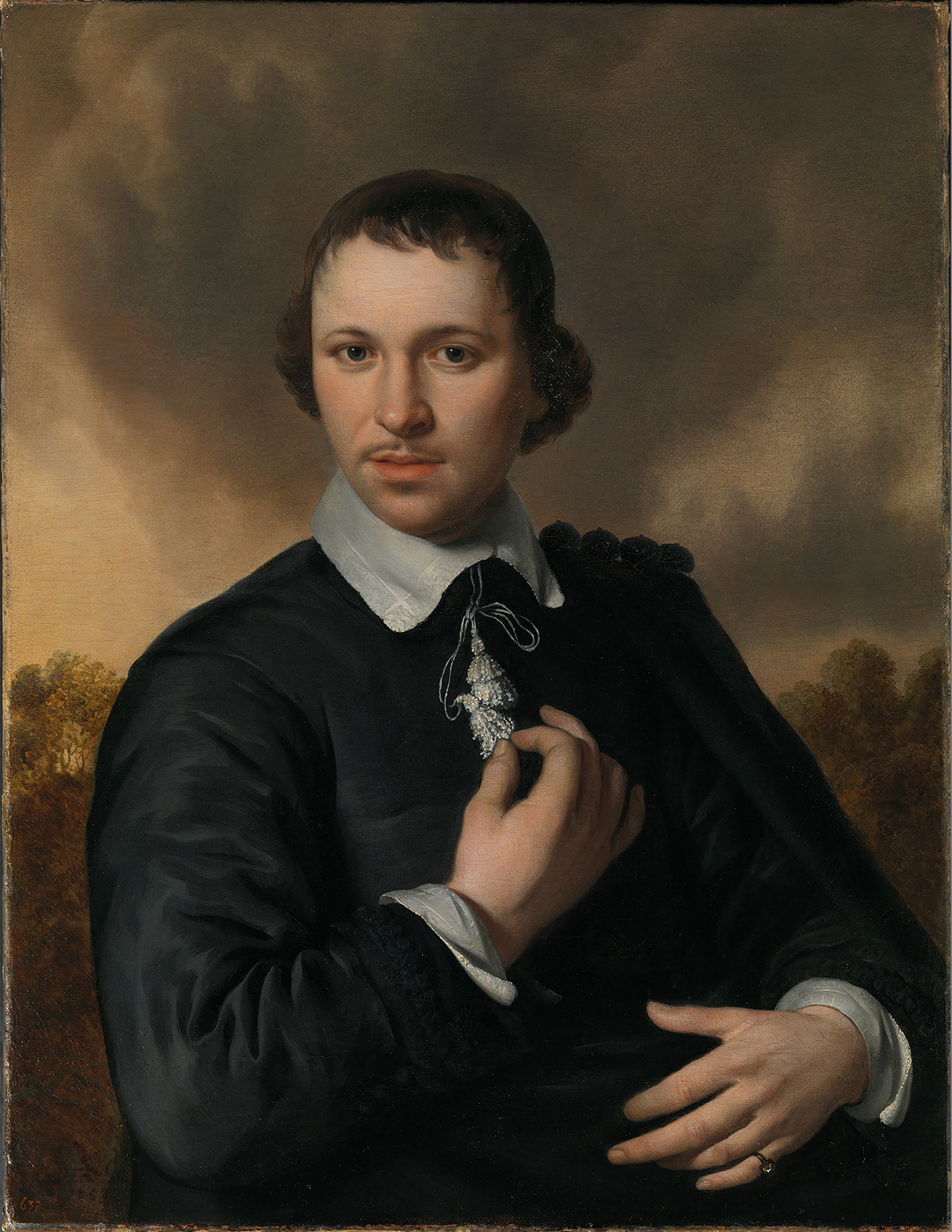
Jan van de Cappelle, a Dutch Golden Age painter, is celebrated for his serene maritime scenes and winter landscapes, marking him as a distinguished figure in 17th-century Dutch art. Born in Amsterdam in 1626 to a prosperous dyer, van de Cappelle was largely self-taught, drawing inspiration from Simon de Vlieger, a notable influence in his development as an artist. Despite his primary engagement in his family's dyeing business, van de Cappelle dedicated himself to painting, creating tranquil estuary, river, and calm water scenes, alongside approximately forty winter landscapes. His works are characterized by their meticulous depiction of light and atmosphere, capturing the peaceful essence of maritime life with an unparalleled subtlety.
Van de Cappelle's artistry extended beyond his canvas; he amassed an impressive art collection, including works by Rembrandt and Frans Hals, showcasing his deep appreciation and understanding of art. This collection, one of the era's largest, featured over 200 paintings and some 7,000 drawings, reflecting his keen interest in marine painting and winter landscapes. Notably, his collection was rich with works from significant artists of his time, illustrating van de Cappelle's influential role both as an artist and a collector.
Despite his success, van de Cappelle's contributions were somewhat overlooked in contemporary biographies, possibly due to the period's undervaluation of marine, landscape, and still life painting. However, his influence on marine and winter subject painters, including Willem van de Velde the Younger and Hendrick Dubbels, underscores his lasting impact on the art world.
Van de Cappelle's works are preserved in prestigious institutions, such as the National Gallery in London and the Metropolitan Museum of Art in New York, allowing his serene and detailed visions of calm waters and Dutch vessels to continue captivating viewers and influencing artists worldwide.
For collectors and experts in art and antiques, Jan van de Cappelle's legacy offers a rich exploration of the Dutch Golden Age's maritime and landscape painting. His mastery in depicting the tranquil beauty of the sea and his significant art collection reflect a profound dedication to the arts, making his works highly prized and revered.
To stay informed about new discoveries, sales, and auction events related to Jan van de Cappelle's works, signing up for updates is advisable. This subscription ensures exclusive access to the latest on this masterful Dutch Golden Age painter, enriching collections with the serene beauty of his maritime scenes.
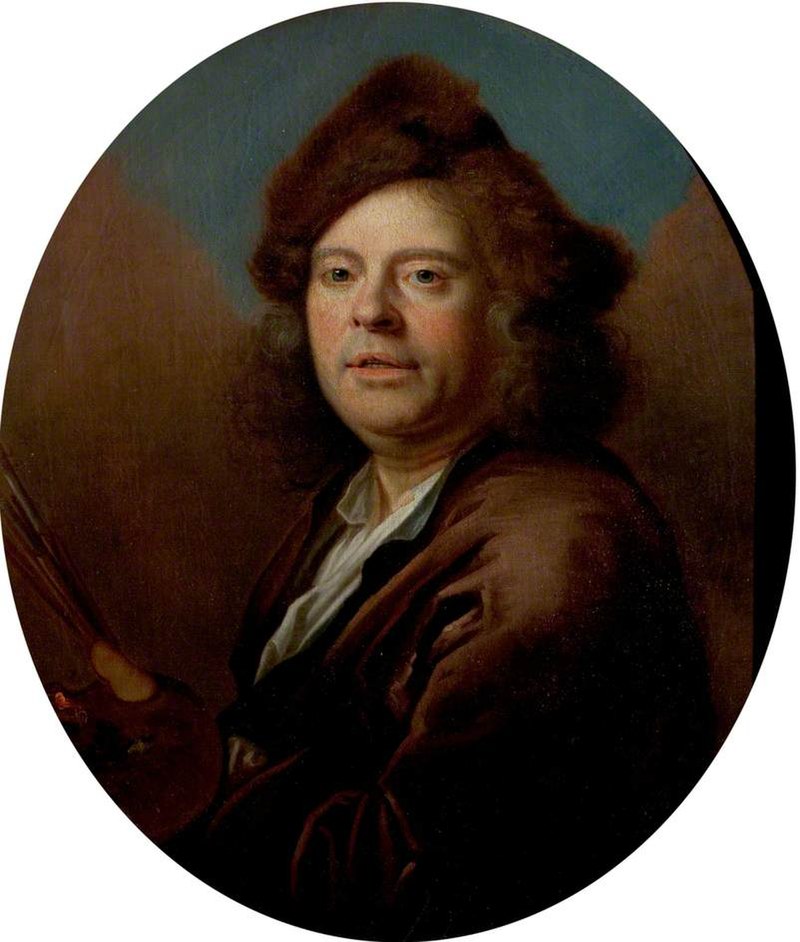
Jan Siberechts was a Flemish landscape painter whose career spanned both his native land and England. Initially, Siberechts developed a personal style of landscape painting in Antwerp, emphasizing Flemish countryside and country life. His work was influenced by Dutch Italianate landscape painters such as Nicolaes Berchem and Karel Dujardin, reflecting a blend of local and Italianate elements. This phase of his career was marked by vivid depictions of the Flemish rural life, with robust country girls in bright attire becoming a signature motif of his paintings.
Siberechts moved to England around 1672, where he significantly contributed to the English landscape tradition. In England, he painted decorations for the Duke's Cliveden House and later, traveled extensively, completing commissions for aristocratic clients. His English landscapes maintained their Flemish character but also started to focus more on universal themes, with less emphasis on figures and more on the scenery itself. These works are characterized by powerful trees, soft light on distant hills, and a relatively dark foreground to highlight the illuminated vistas in the background.
Siberechts is credited as the 'father of British landscape' for his pioneering country house portraits, blending detailed naturalistic views of stately homes into atmospheric landscapes. This innovative approach had a lasting influence on English landscape painting. His work, such as the views of Longleat and the Belsize Estate, represents an important step in the development of topographical painting, merging Flemish influences with the emerging English landscape tradition.
For collectors and experts in art and antiques, Siberechts' oeuvre offers a unique window into the transnational flow of artistic ideas in the 17th century, blending Flemish traditions with the nascent English landscape genre. His paintings, celebrated for their detail and historical topographical interest, can be found in prestigious collections such as the Tate Gallery London and the Victoria and Albert Museum.
For updates on exhibitions, sales, and auction events related to Jan Siberechts' work, art enthusiasts are encouraged to sign up for dedicated newsletters. This ensures that they remain informed about the latest opportunities to explore and appreciate the contributions of this influential Flemish artist to the landscape painting genre.
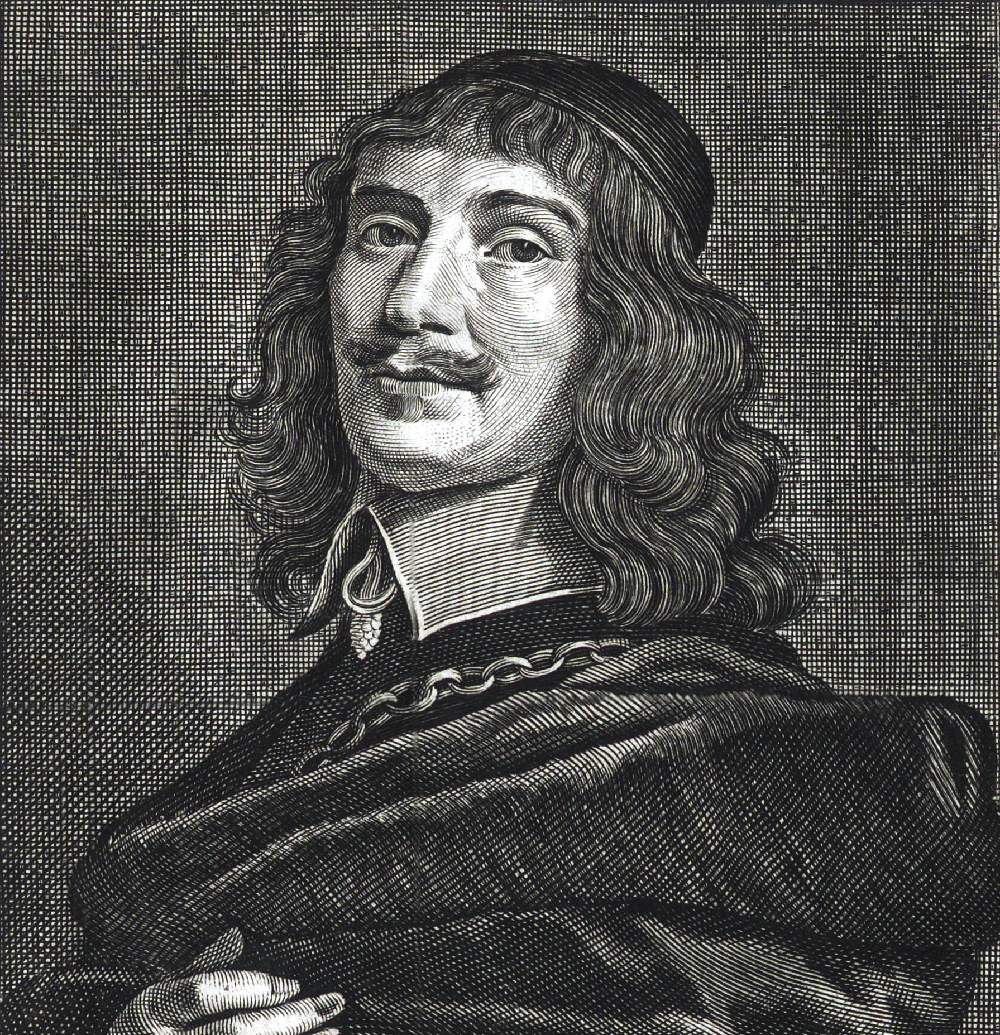
Gerard van Honthorst (Dutch: Gerrit van Honthorst) was a Dutch Golden Age painter who became known for his depiction of artificially lit scenes, eventually receiving the nickname Gherardo delle Notti ("Gerard of the Nights"). Early in his career he visited Rome, where he had great success painting in a style influenced by Caravaggio. Following his return to the Netherlands he became a leading portrait painter.
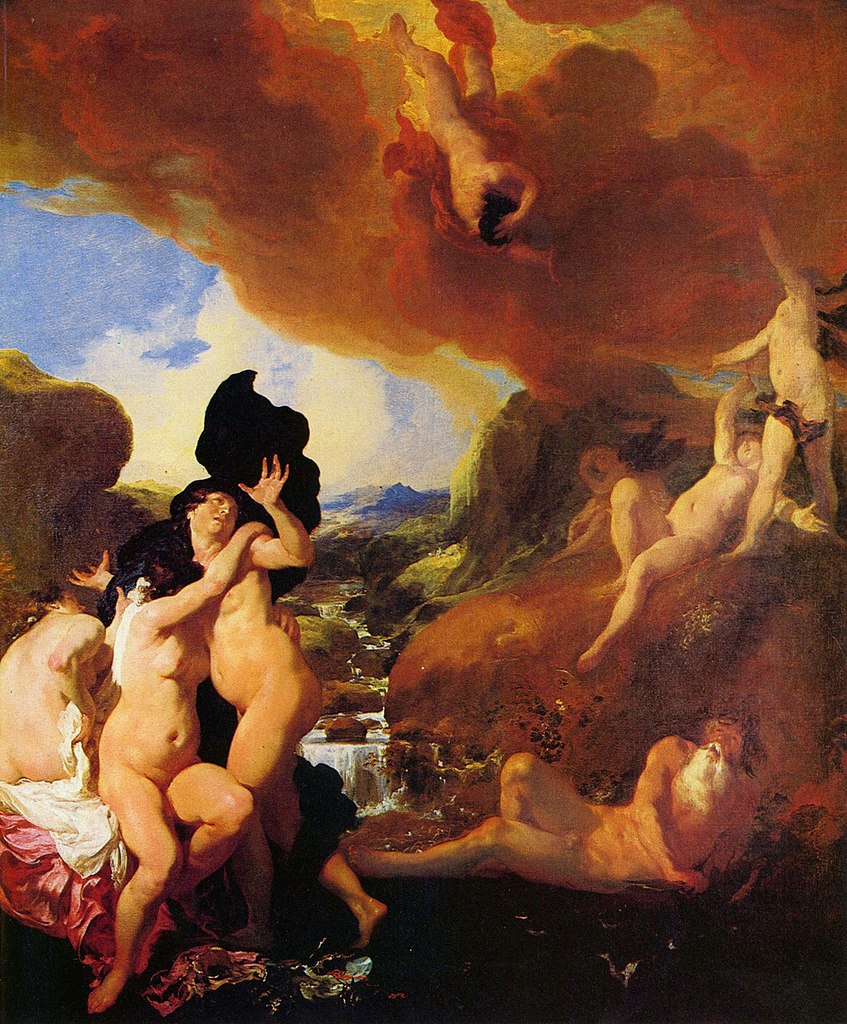
Johann Liss was a German painter of the first third of the 17th century. He is known as a painter, draughtsman and printmaker, who worked in Italy for much of his life, and as the son and namesake of Johann Liss, a painter at the court of the Dukes of Holstein.
Johann Liss worked primarily in the mythological genre. He is considered one of the key artists of the German Baroque and a prominent representative of the Venetian school. Early in his career, the artist traveled to the Netherlands, where he was influenced by a number of Dutch and Flemish masters. Italy inspired him to synthesize Dutch genre painting, Venetian style and Roman realism.
His paintings are in numerous European collections as well as in Russia and the United States.
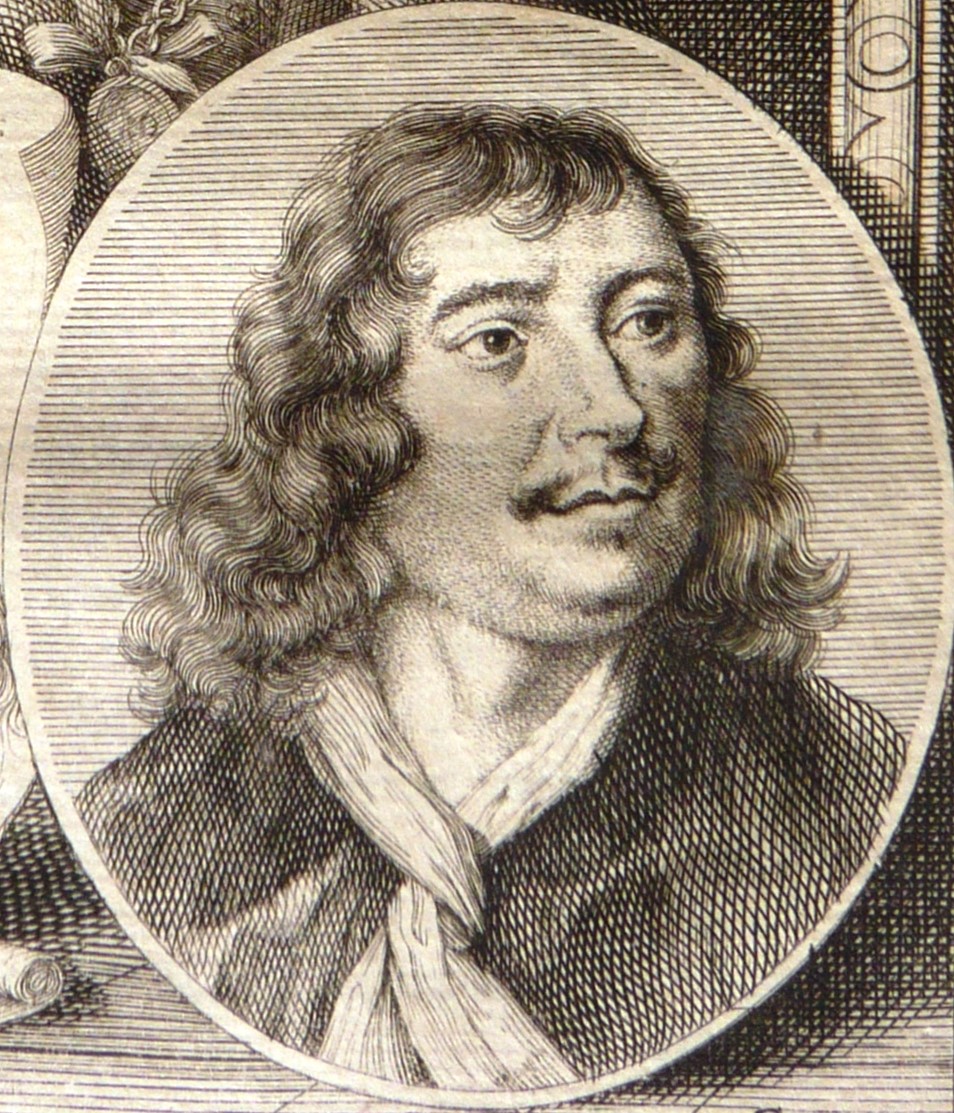
Johann(es) Lingelbach was a Dutch Golden Age artist who worked in the bamboochade genre.
He first studied painting in Holland, from 1642 in Paris and from 1644 in Rome. The influence of Philippe Vovermann is noticeable in Johannes works. He is known for his numerous landscapes and war scenes, in which the influence of Italian painting is perceptible. He worked for other painters as well, painting their canvases with different details, backgrounds and animals.
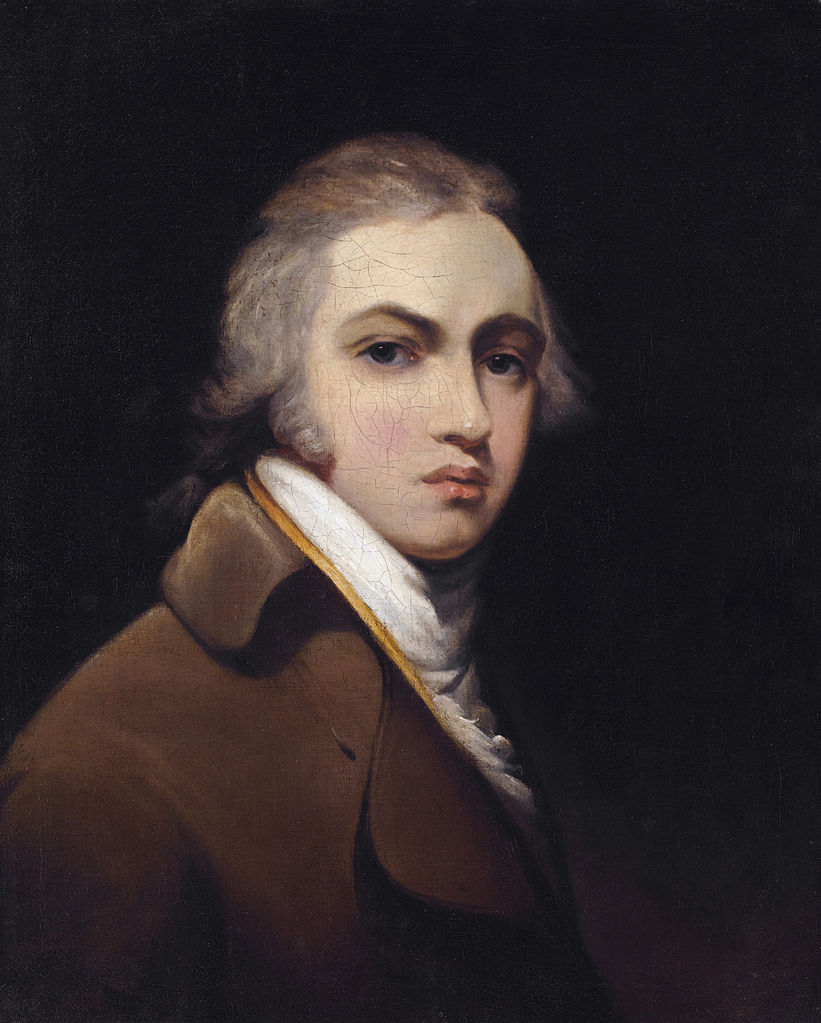
Thomas Lawrence was a prominent English painter, celebrated for his mastery in portraiture, who made a significant mark in the world of art and culture during the late 18th and early 19th centuries. Born in Bristol in 1769, Lawrence was a child prodigy, supporting his family through his artistic talents from a young age. His journey took him to Bath and eventually to London, where he swiftly established himself as a leading portrait artist, capturing the likenesses of society's most influential figures.
Thomas Lawrence's work is renowned for its elegance, capturing the essence and personality of his subjects with remarkable finesse. His ability to portray the delicate nuances of expression and character made his portraits highly sought after by the aristocracy and royalty alike. His commissions included portraits of King George III, Queen Charlotte, and the Prince Regent, as well as numerous other figures from the British and European nobility. Among his notable works are the portraits of Elizabeth Farren, soon to be the Countess of Derby, characterized by its vibrant expression and elegance, and the depiction of actress Sarah Siddons' daughters, which underscored his personal entanglements and the emotional depth he could convey through his art.
Despite his success, Thomas Lawrence's life was not without its challenges. He was perpetually in debt, a situation that puzzled his contemporaries given his tireless work ethic and the absence of any overt extravagance in his lifestyle. Furthermore, his romantic life was complicated, marked by his unfulfilled love for the Siddons sisters, which added a layer of personal tragedy to his story.
Thomas Lawrence's contributions to art were recognized by his election as a full member of the Royal Academy in 1794, and he later served as its president. His legacy is preserved in galleries and collections worldwide, including the National Gallery in London, which houses several of his masterpieces. His portraits of abolitionists and slave-owners alike reflect the complex social fabric of his time, offering a window into the era's cultural and historical context.
For collectors and experts in art and antiques, Thomas Lawrence's works represent not just aesthetic achievements but also valuable historical documents that capture the essence of an era. His portraits are a testament to the power of art to convey both the external likeness and the inner soul of the subject.
For those interested in the intersection of art, history, and culture, and who wish to stay informed about new discoveries, sales, and auction events related to Thomas Lawrence's work, signing up for updates is an invaluable resource. This ensures that enthusiasts and collectors alike remain at the forefront of developments in the world of art and antiques related to this illustrious painter.
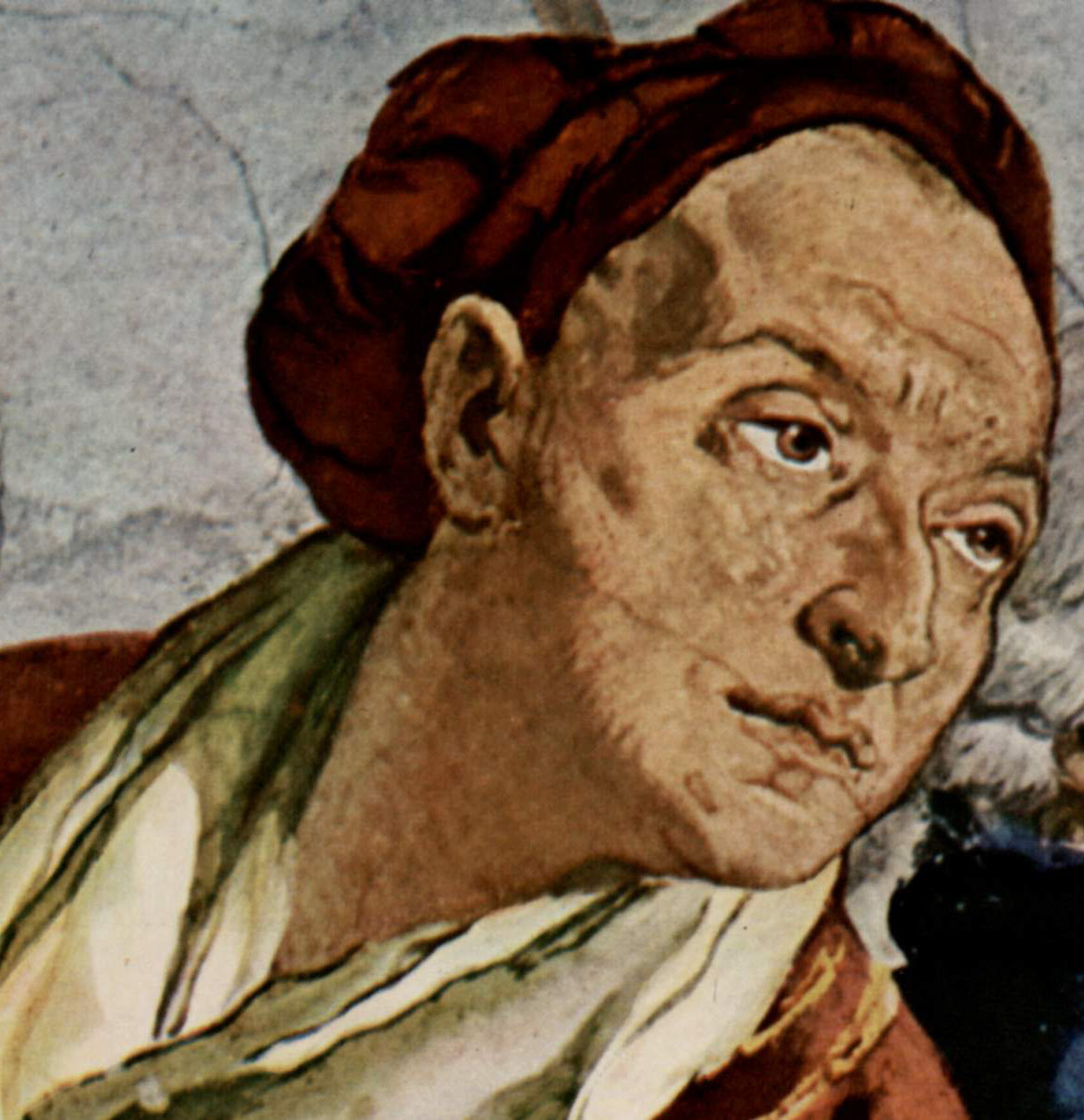
Giovanni Battista Tiepolo, an illustrious Italian painter of the 18th century, is renowned for his radiant and poetic frescoes that beautifully extend the tradition of Baroque ceiling decoration, encapsulating the essence of the Rococo period. Born in Venice, Tiepolo was significantly influenced by his contemporaries and predecessors, such as Piazzetta, Ricci, Tintoretto, and Veronese, which is evident in his dynamic and vibrant works.
Giovanni Battista Tiepolo's expertise in creating grand frescoed ceilings for churches, villas, and palaces across Italy, Germany, and Spain is particularly noteworthy. His work at the Würzburg Residenz, where he painted a vast ceiling depicting Apollo and the continents, is considered a high point of his career. This masterpiece demonstrates his skill in creating spatial illusions and integrating multiple perspectives to enhance the viewer's experience.
In addition to his frescoes, Giovanni Battista Tiepolo's prowess as a draftsman and printmaker was widely acclaimed. His prints, characterized by imaginative and sometimes enigmatic imagery, enjoyed widespread popularity and may have influenced subsequent artists like Francisco de Goya.
Throughout his career, Giovanni Battista Tiepolo received numerous commissions across Europe, reflecting his international fame. His later works in Spain, where he moved with his sons to serve the Spanish monarchy, showcase a quieter yet profound style, focusing on religious and allegorical themes.
For collectors and experts in art and antiques, Giovanni Battista Tiepolo's legacy represents an essential chapter in the history of art, offering insights into the interplay of light, color, and narrative in 18th-century European painting. His works, housed in various museums and collections worldwide, continue to captivate and inspire audiences with their elegance and grandeur.
If you wish to stay updated on new product sales and auction events related to Giovanni Battista Tiepolo, signing up for updates is an excellent way to ensure you don't miss out on any valuable information.
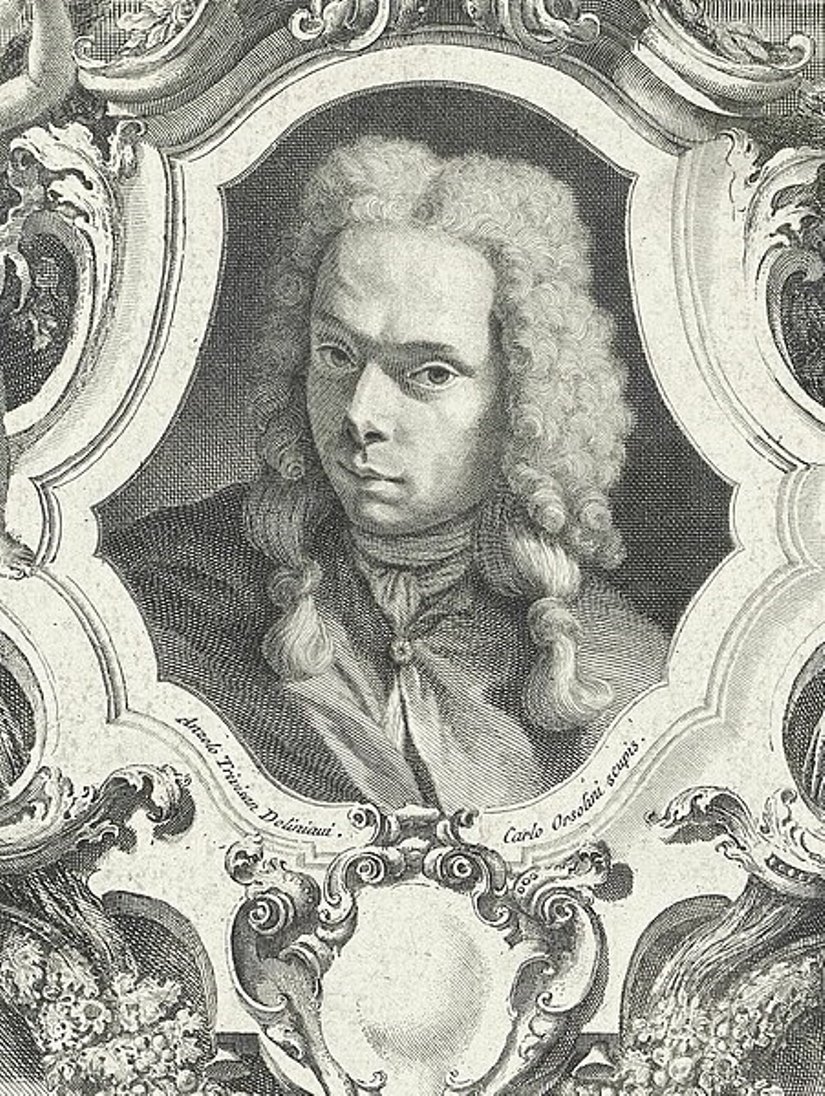
Michele Marieschi was an Italian painter, known for his landscape and cityscape paintings, primarily of Venice. Born in 1696, Marieschi was a pivotal figure in the veduta genre, a style focusing on detailed and often idealized representations of cityscapes. His works are celebrated for their architectural detail and the lively, fresh use of paint, distinguishing him from his contemporaries like Canaletto. Michele Marieschi's paintings often featured exaggerated perspectives, infusing scenes from life with the novelty of capricious invention.
His career included a significant period from 1735 to 1741 when he was registered with the Venetian painters' guild, indicating his recognition and establishment within the Venetian art community. In 1741, Marieschi published a set of 21 prints of Venice, providing a lasting legacy of his perspective on the city's unique landscape. This collection, titled "Magnificentiores Selectioresque Urbis Venetiarum Prospectus," included a self-portrait, underscoring his role in documenting Venice's architectural splendor.
Michele Marieschi's approach to vedute was influenced by his early work in scenery painting, allowing him to create urban views marked by an inventive use of perspective. This stylistic choice offered a new dimension to scenes taken from life, setting Marieschi apart from his peers.
For collectors and experts in art and antiques, Michele Marieschi's works represent a unique blend of architectural precision and imaginative composition. His influence on later painters, including Francesco Guardi, underscores his importance in the development of the veduta genre.
To stay informed about new discoveries, sales, and auction events related to Michele Marieschi's work, signing up for updates from relevant art institutions and auction houses is recommended. This subscription ensures that enthusiasts and collectors remain abreast of the latest developments related to this master of the Italian cityscape.
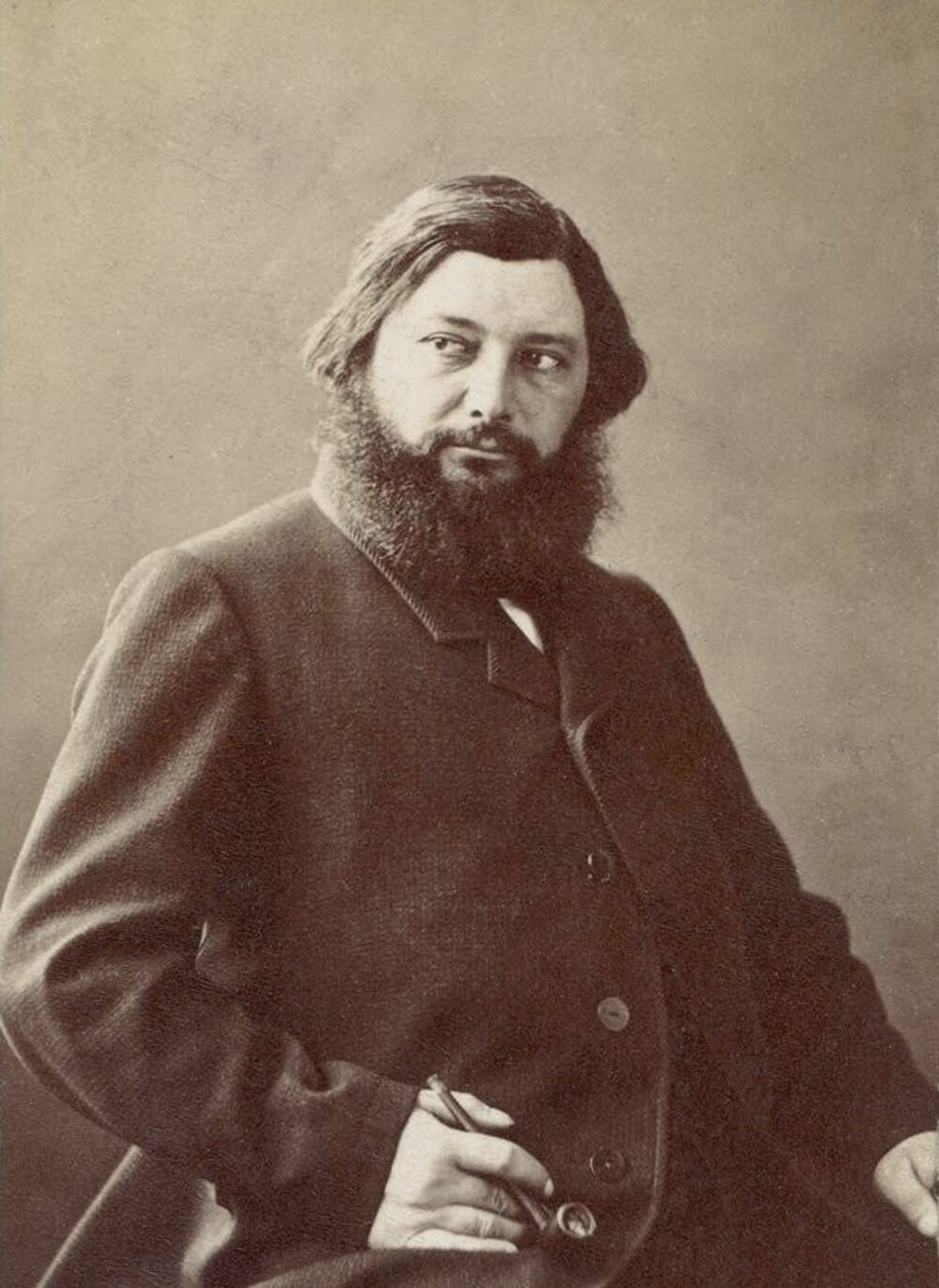
Jean Désiré Gustave Courbet was a French painter who led the Realism movement in 19th-century French painting. Committed to painting only what he could see, he rejected academic convention and the Romanticism of the previous generation of visual artists. His independence set an example that was important to later artists, such as the Impressionists and the Cubists. Courbet occupies an important place in 19th-century French painting as an innovator and as an artist willing to make bold social statements through his work.

Francesco Hayez was an Italian painter, considered one of the leading artists of Romanticism in Italy in the mid-19th century.
He showed talent as an artist early on, studying painting in Rome and at the Venice Academy. Arriving in Milan in 1823, he quickly established himself at the center of the intellectual and aristocratic life of the city. Hayez created grandiose paintings of historical subjects with a patriotic context, popular biblical scenes and plots from classical literature. The artist loved political allegories as well. He also painted portraits, subtly reflecting the characters of the people portrayed.
